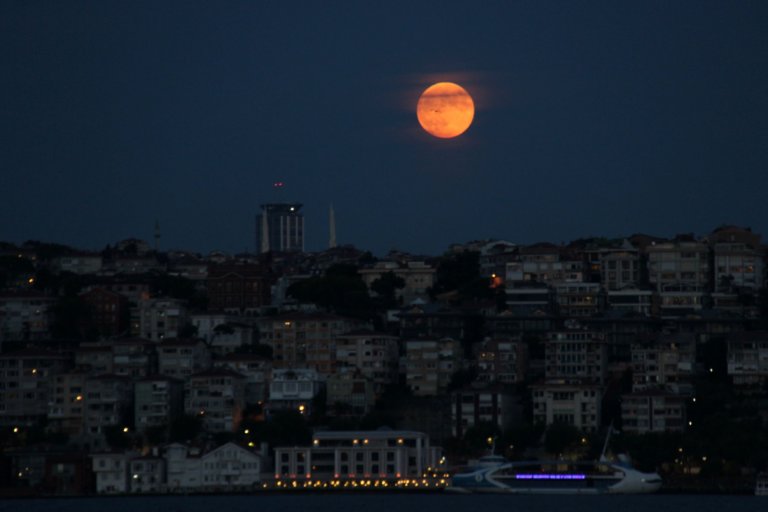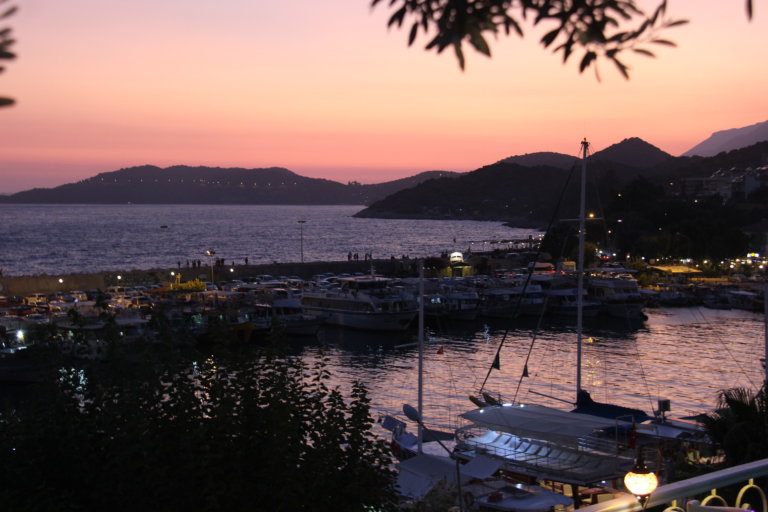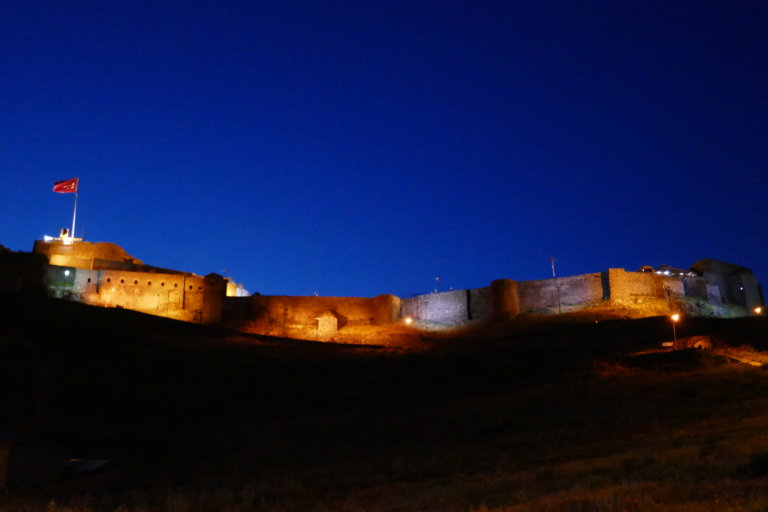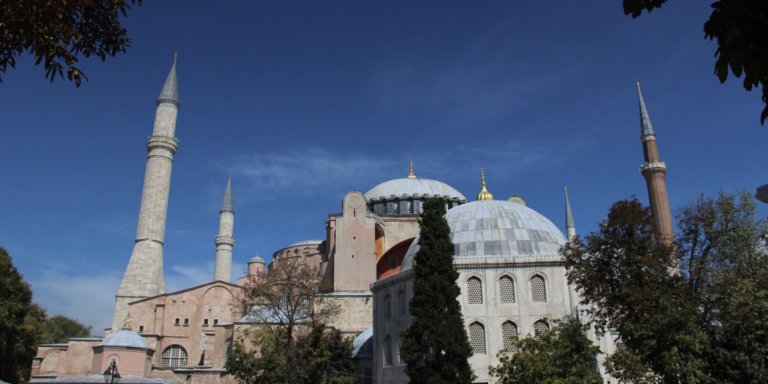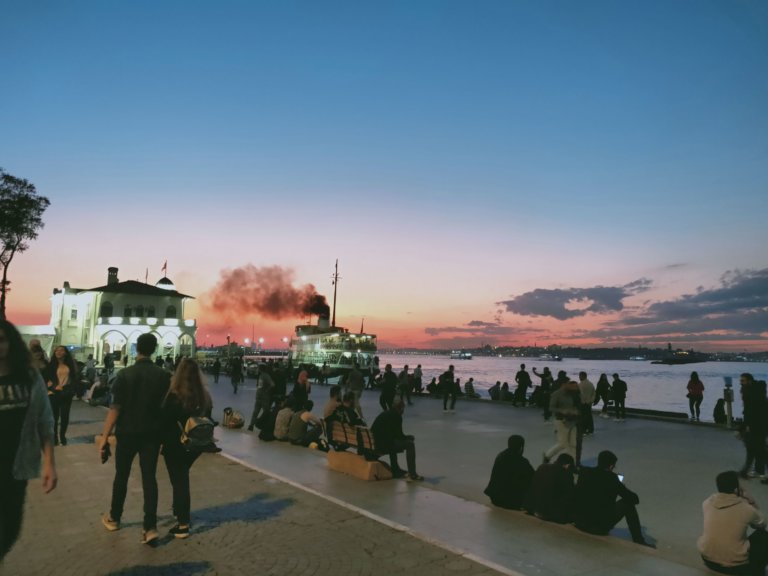Ephesus, Turkey. Day 138 September 14th 2019
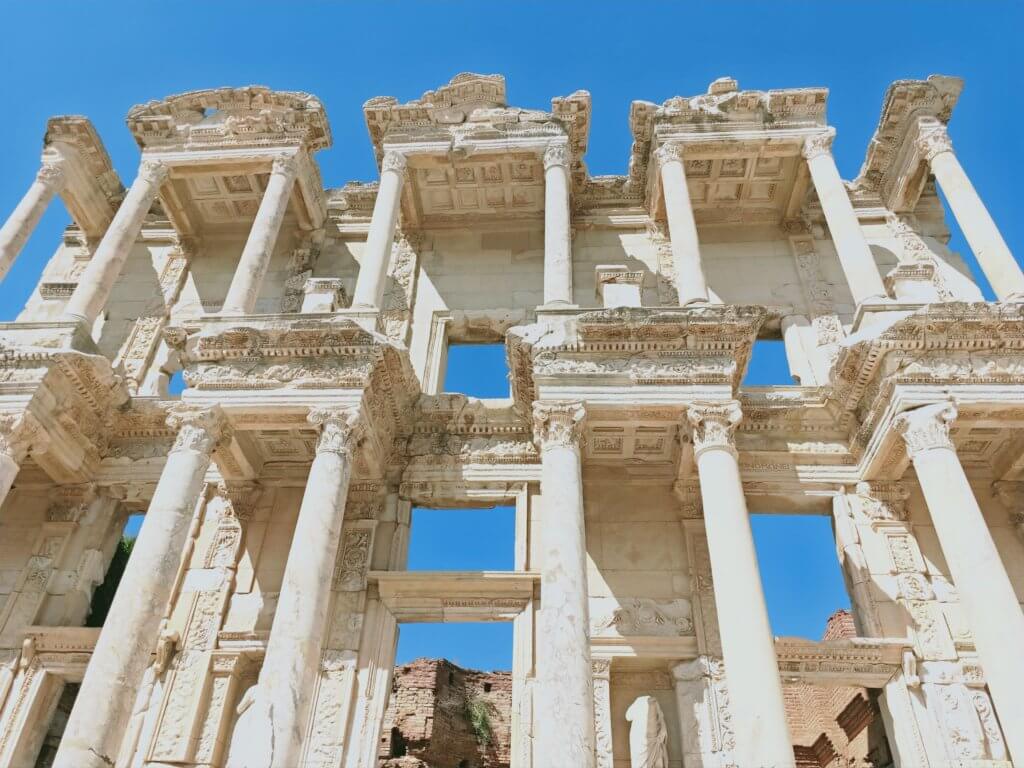
Finding time to keep up our travel memories. Searching for a way to write that does not read like a travelogue list. Looking for a way to talk about places that millions visit – and to find what it is that interests us in that furore. We have ongoing conversations (sometimes tetchy) about the why and how we write our memories here.
This all came swirling around today. The reason – Ephesus.
A famous city of antiquity. A city where an event is described as: “it was 30AD or maybe 34AD?” as though it was modern times. Where not just one but many ancient civilisations have built their lives: Hittites, Lydians, Epheseans, Neanderthals, Mycenaeans, Dorians, and on and on I admire the ability of guides here to rattle off that ancient and confusing history that leaves us with our heads spinning.
Today was also the day we found ourselves amidst a throng of tourists – a phenomena we rarely encounter in our travels.
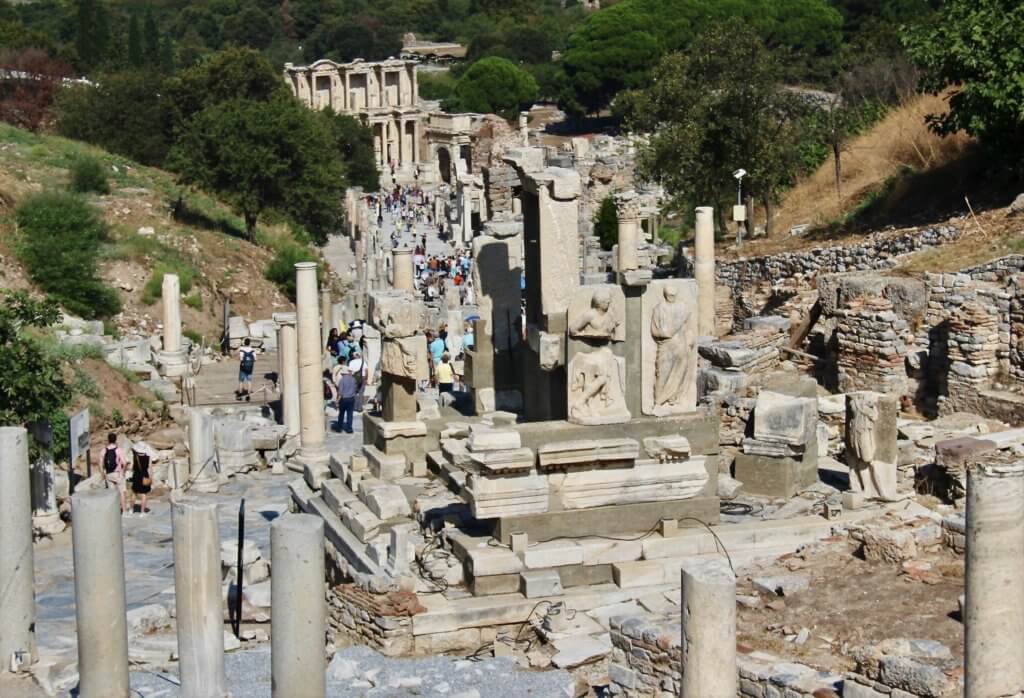
At the end of today, we had THAT discussion again – “How do we write up today?” No conclusion. And so I write what took my fancy!
The symbol of medicine carved on a marble block outside what was an ancient hospital.
This carving showed a snake wrapped around a staff – still held as the symbol of medicine?? A story was told as we stood around the carving. An old man attending hospital was told he was dying. Told to go home there was nothing more could be done. On his way home he observed a snake discharge venom into milk. Drinking the milk he hoped to end his life quickly, instead he revived. And so after reported back to the hospital the snake became the symbol of medicine. True or False? It is a great story though corroboration proves difficult!

The Headless Statue of an Egyptian Doctor who made a medical breakthrough
A carving of a man in draped cloth, missing his head, is apparently an Egyptian Doctor who corrected a long-held misbelief amongst the inhabitants of Ephesus that the air was making them sick. The Doctor helped them realise it was a mosquito-borne disease that was killing the population.
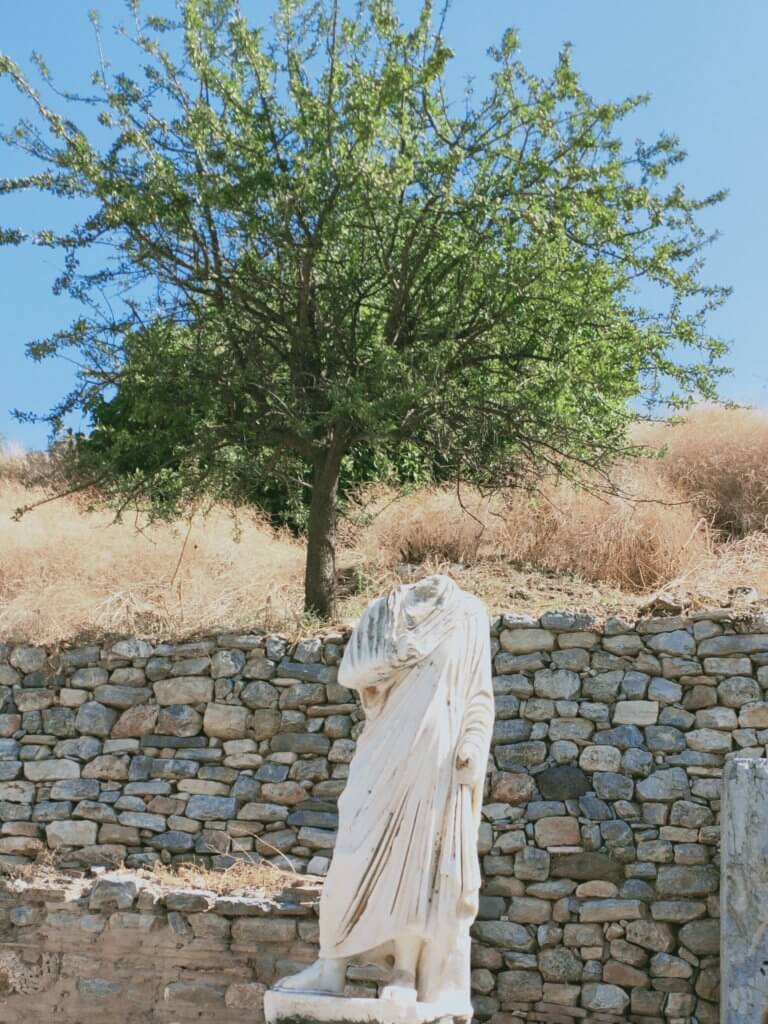
The library building with a dubious link.
The library building for me was the most astounding in the complex. A two-storey complex that once housed an extensive library. Not one book survives – yet the façade of the library building excites many – including a young couple spotted mid-marriage proposal. Me – horrified that my Instagram cynicism looks for the camera opp. There was none – just a young couple oblivious to the throng around them. Him down on one knee.
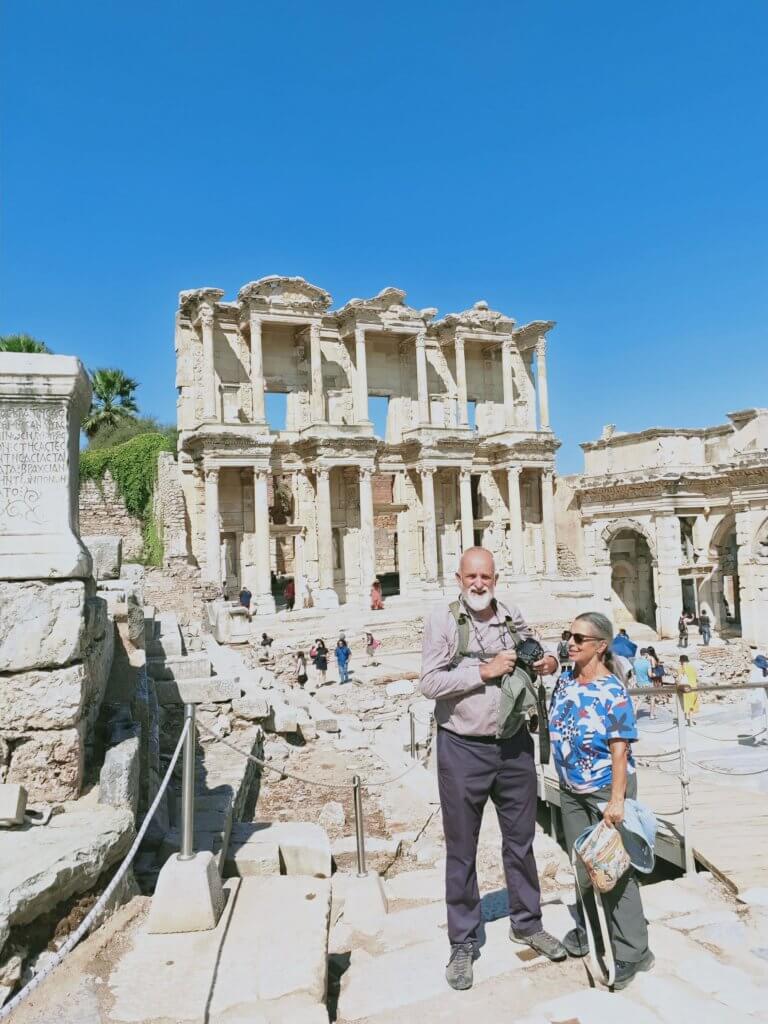
The love house (brothel) supposedly linked to the library by a tunnel
A delicate footprint in marble, a woman’s footprint, with a love heart close by, is said to give direction to the “love house”. The “love house” opposite the library, is said to be linked to the library by an underground tunnel.
Why? Apparently the men would say “I am going to the library”.
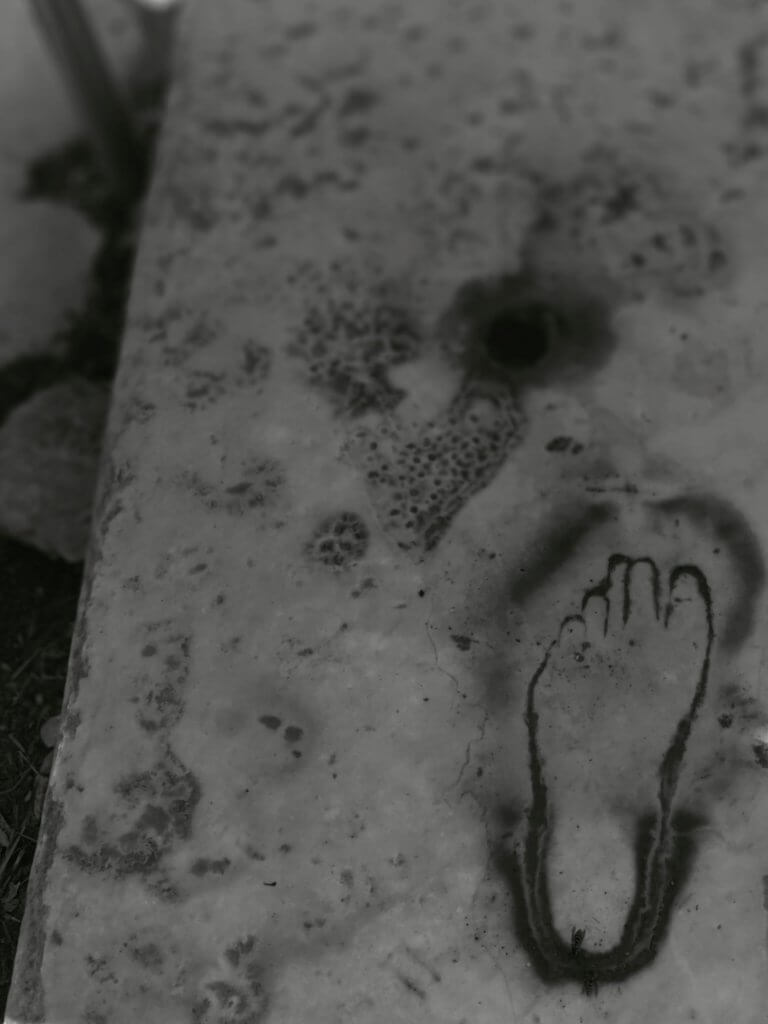
Strong Women in history captured in the Imagery
In contrast to the message implied above that women were easily duped, many reliefs featured strong women. It was also reported that pre-Christian times women were the leaders. Amazons feature often in the reliefs – warring women in charge.
The Ephesian Goddess Artemis, Medusa a strong role model diminished to a mad woman. Apparently dimnished (or elevated) as the symbol of the blue shaded Evil eye in Turkey. The strong warlike woman – the Amazons, the Goddess Nike.
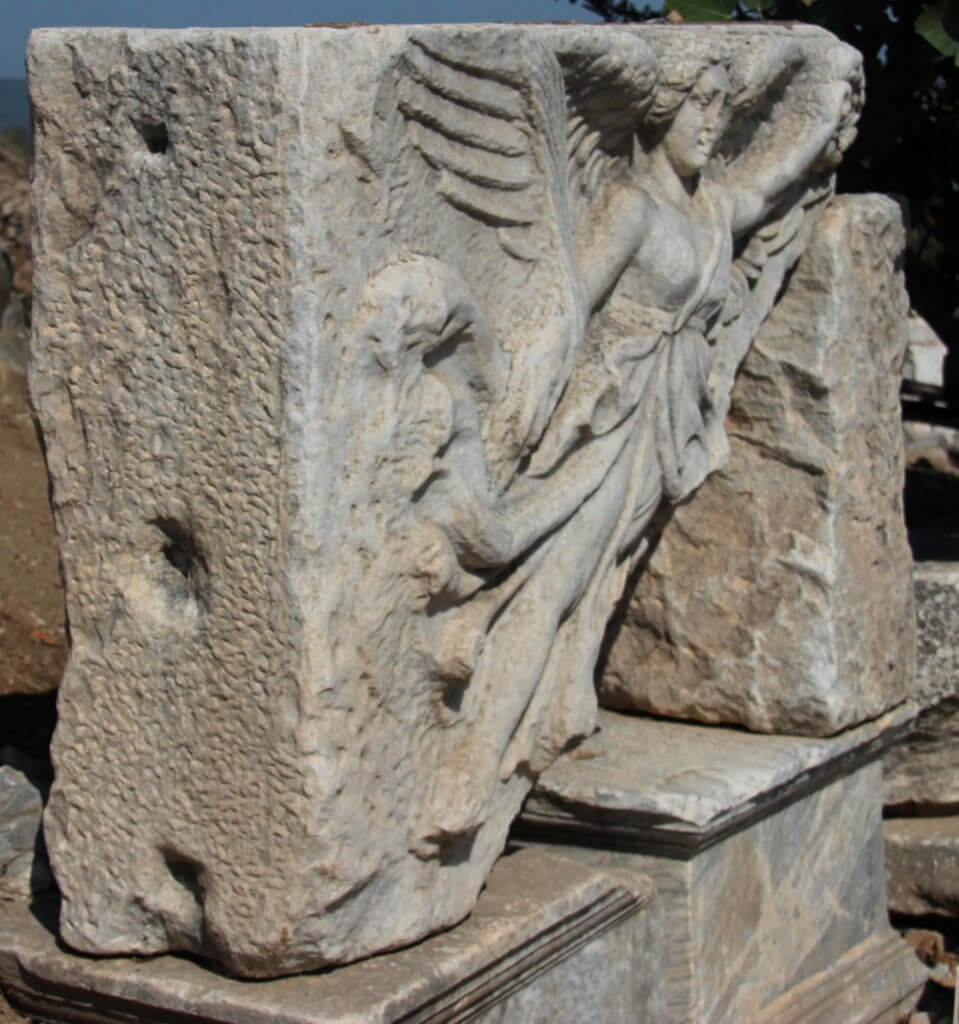
The ancient toilets of Ephesus –
Rows of marble slabs with recognisable toilet shaped holes carved in them lined the walls. Once in the centre had been a pool. Underneath the toilets ran a channel for draining effluent, in front of the seats a channel with running water for cleaning.
Marvelling at the white marble toilets and sophisticated drainage system quickly changed to horror after hearing the sponges used to wash each person after toileting were returned to a communal pond in the centre. Drainage and water flow were sophisticated understanding of disease transmission not so.
To add to the horror. Slaves were sent to warm the seats in cooler weather and to clean the drainage and channels. Ephesus being one of the largest centres for slave trade at that time.
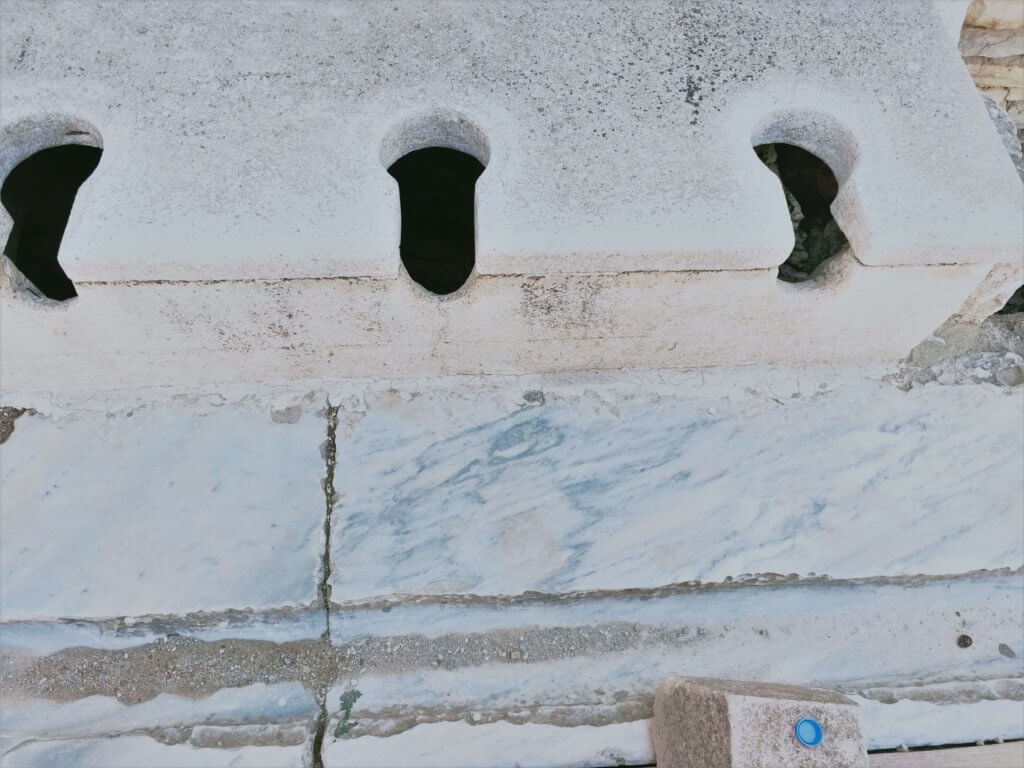
Missing Antiquities. Where are the statues that belong to the pedestals?
A row of pedestals, without their statues atop, line a portion of the road. Apparently, when questioned about the whereabouts of the statues – it seems they are in a museum in Vienna. It is said when it was requested these be returned the response was they were removed during the Ottoman Empire, now you are the Turkish republic – therefore no claim! True or False? Who knows but the statues are not on their pedestals.
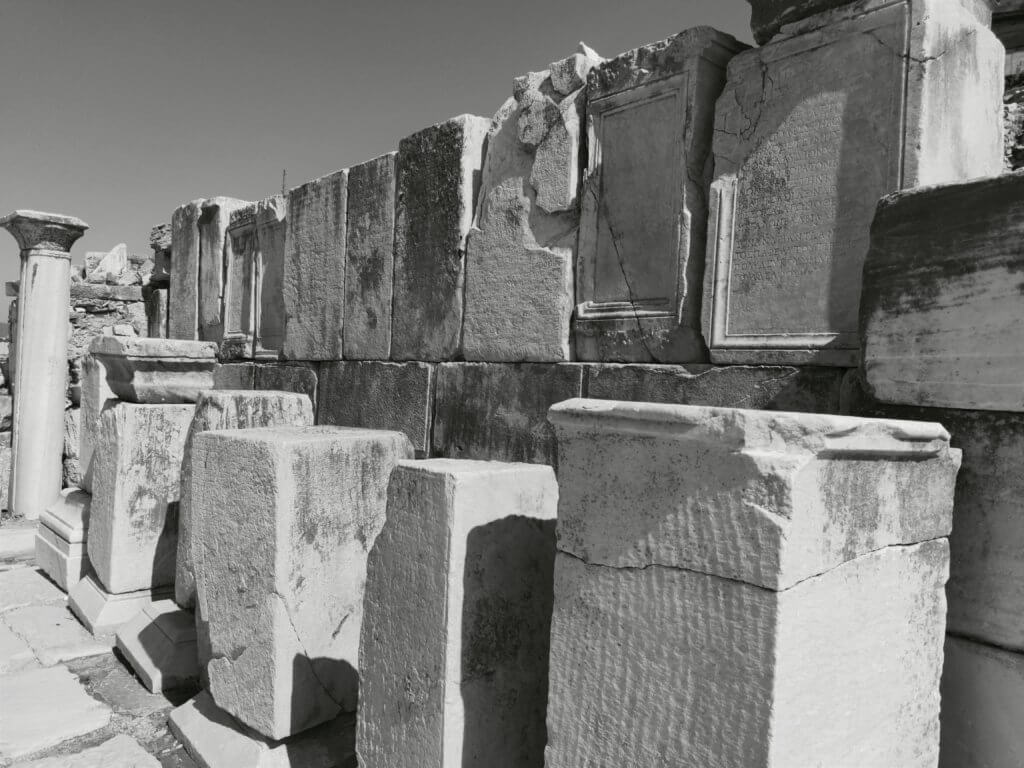
An ancient Backgammon board.
A marble slab carved with a lip around the edge and marked with squares has been identified as an early form of Backgammon.While some of the board is broken away it is still functional after 1,000’s of years.
Backgammon seen now played on many streets, in many cafes across the world. Groups of men throughout Turkey sit playing backgammon as we know it today. In Ephesus here was an ancient derivative of the game.

Sometimes it is the small details and artifacts that stay in your mind. Ephesus is a huge site still being excavated, yet already so many stories.
The histories we hear about resonate constantly with the world today. Yet we seem to learn few lessons. We have not accepted the futility of war, the dangers of consumerism, the implosion of civilisations. One of the key fascinations for me today was – Ephesus was apparently the richest city of its time, a hub of the ancient world – downed by a changing sea and mosquitos. River silt built up in the inlet that once was a major sea entrance, and mosquitoes followed bringing disease.
More about the full history of Ephesus
